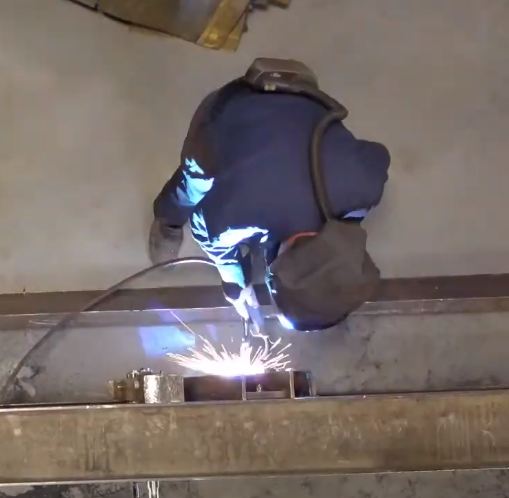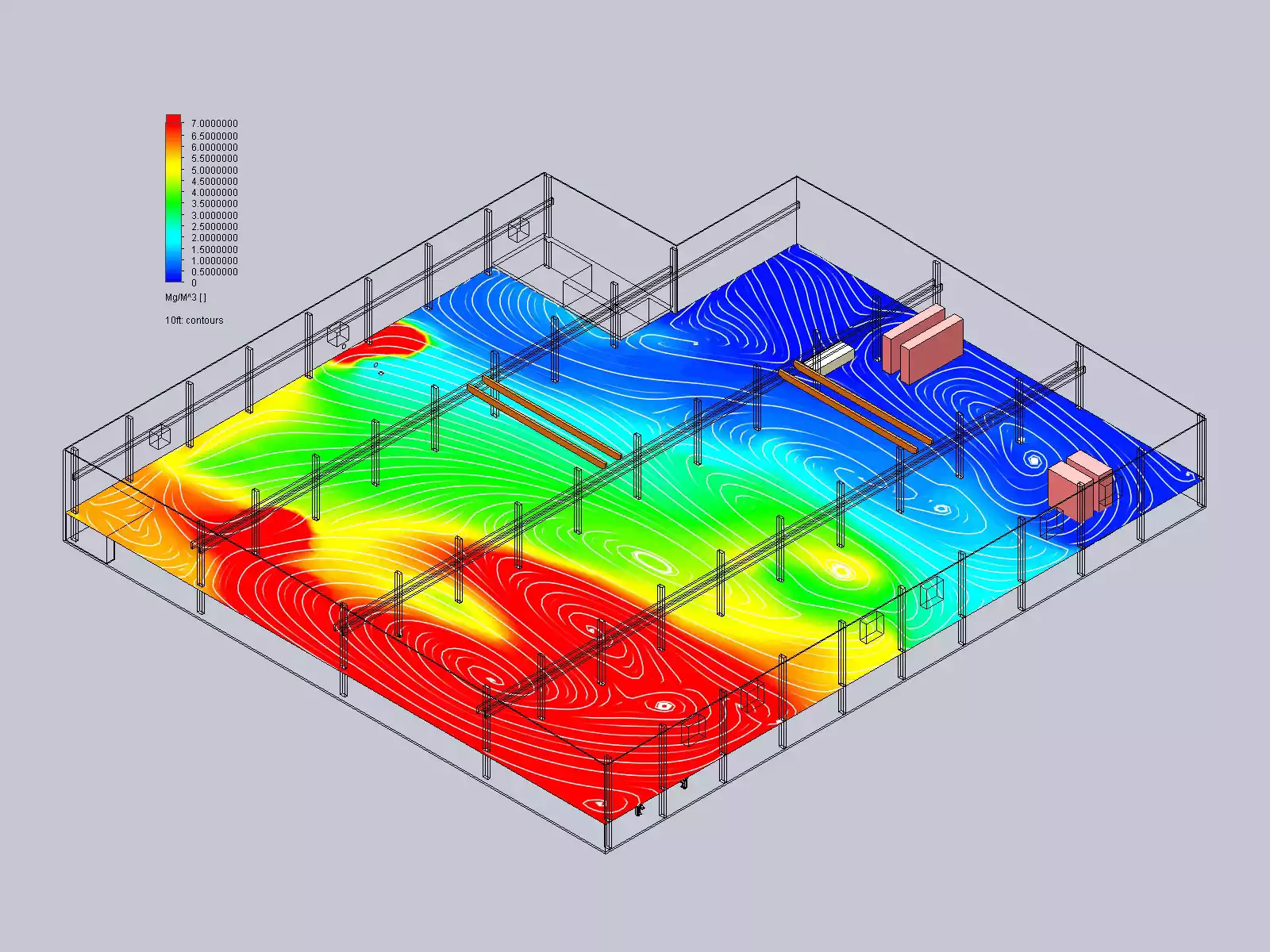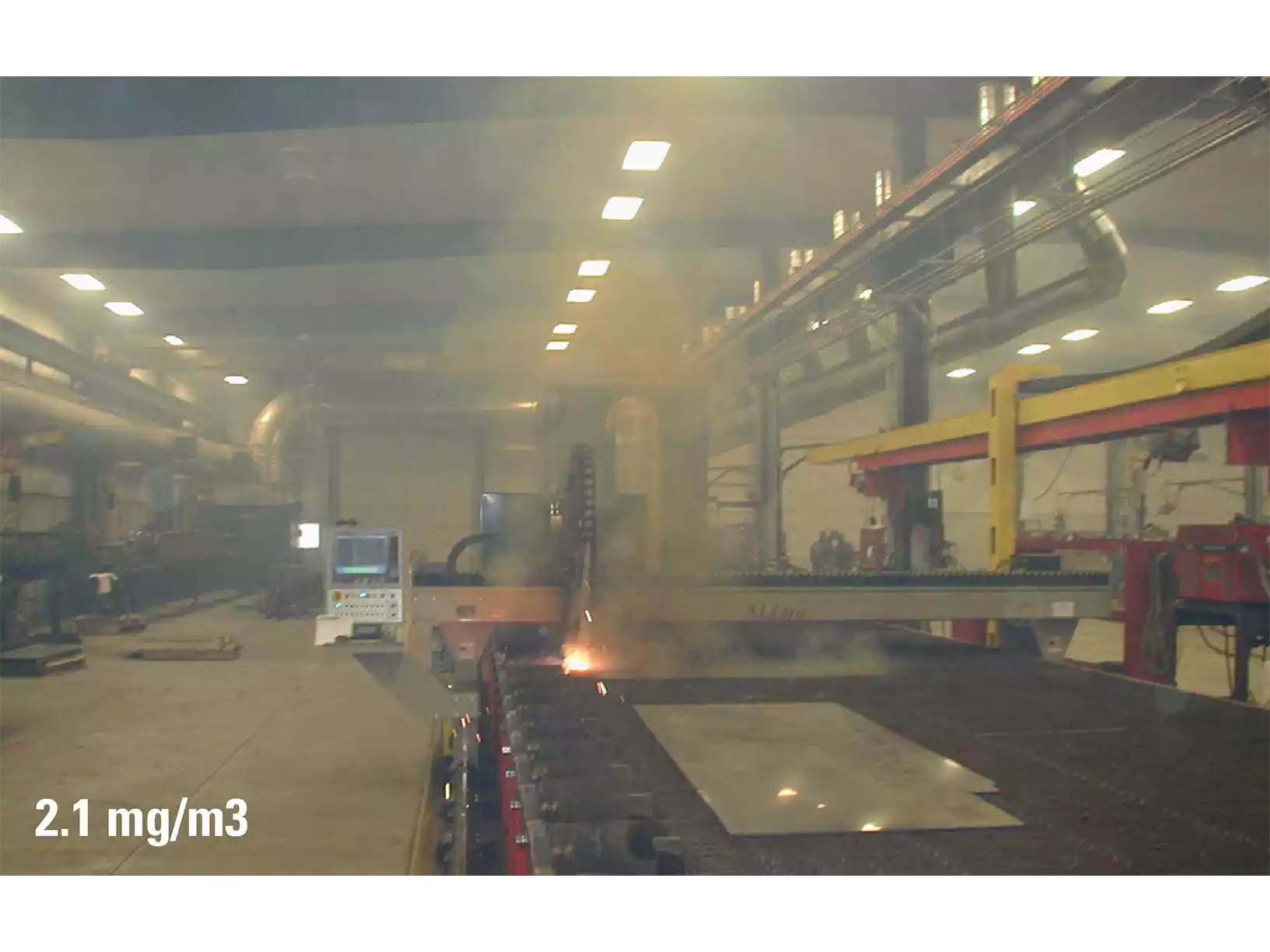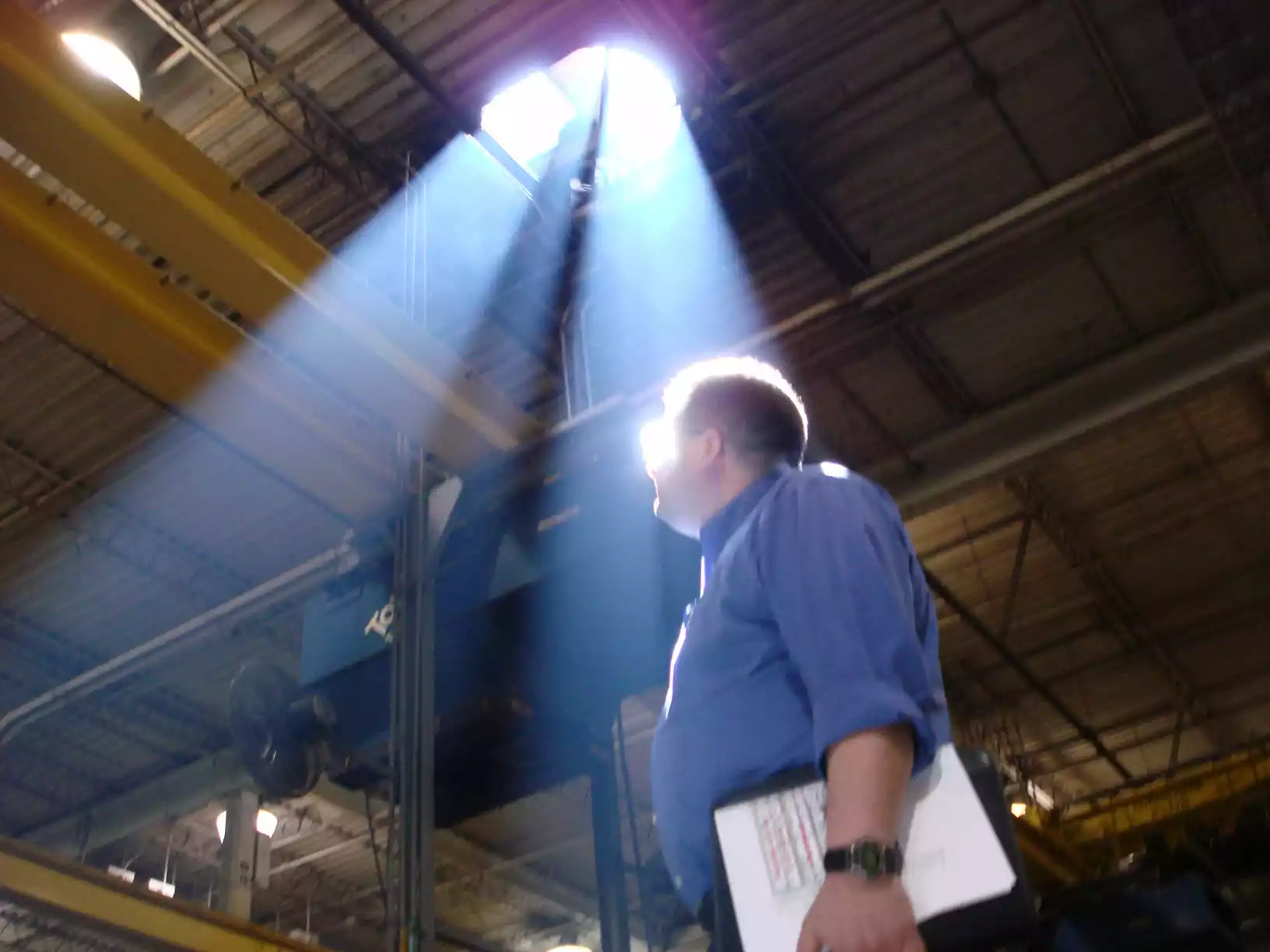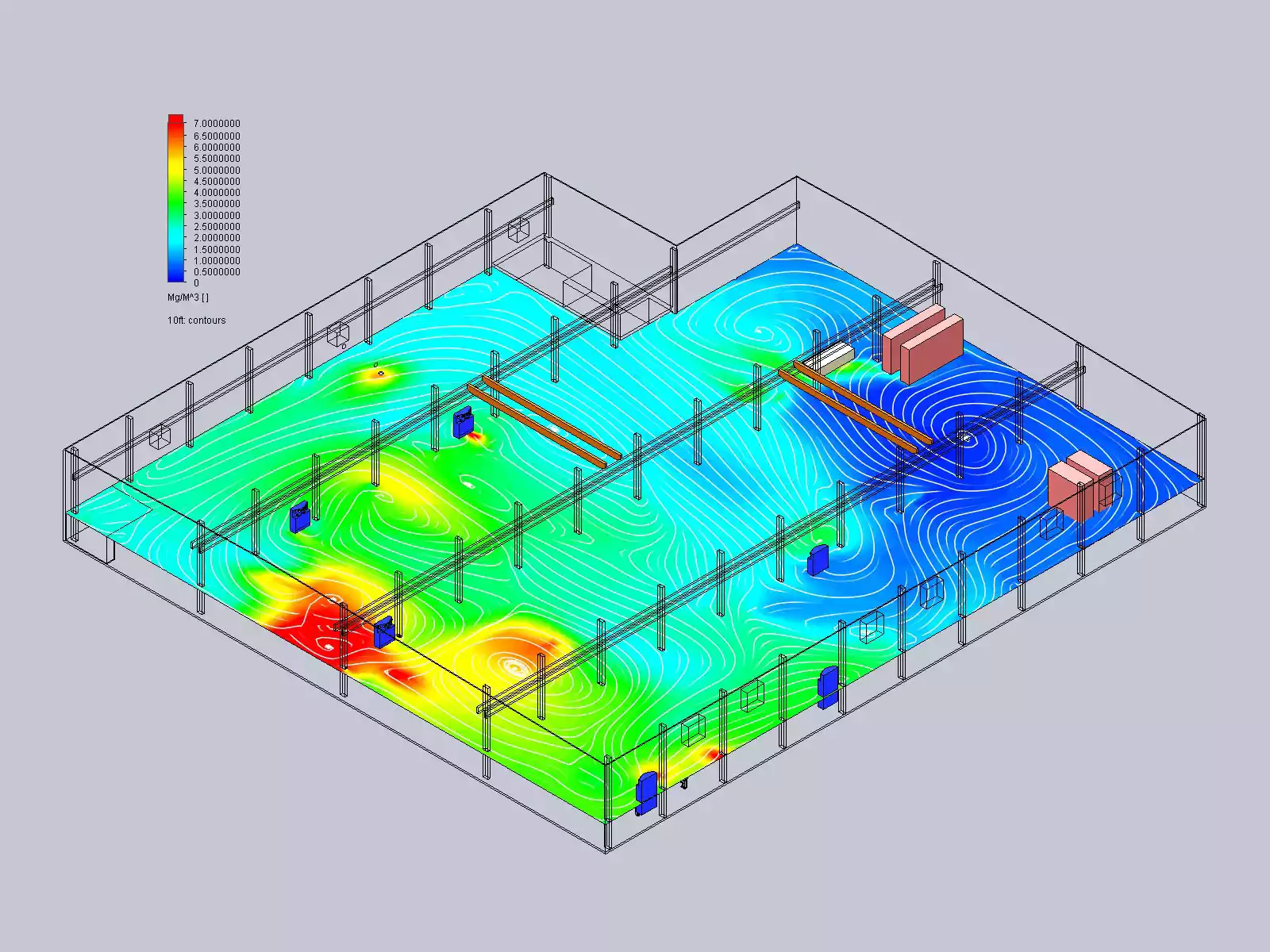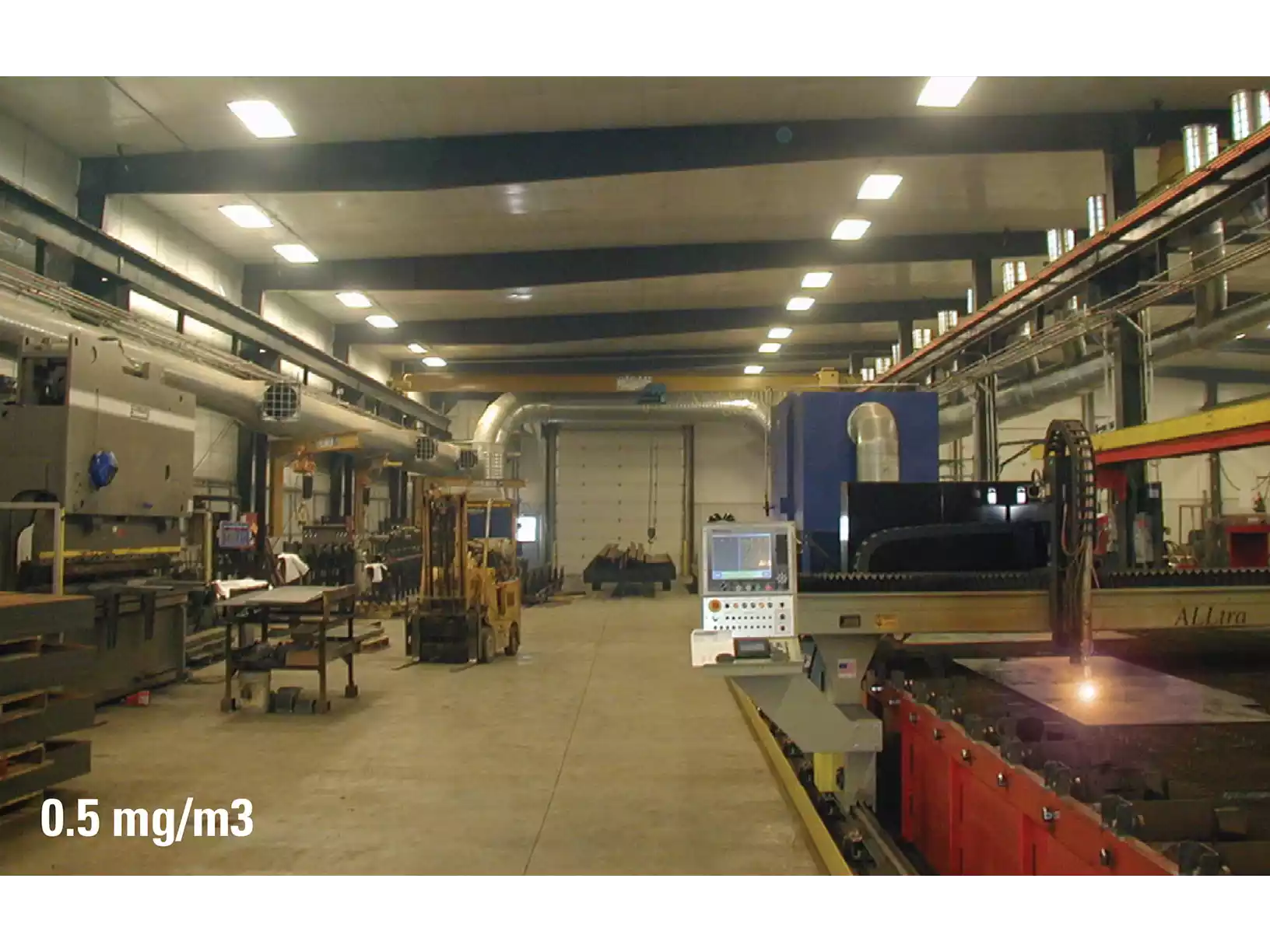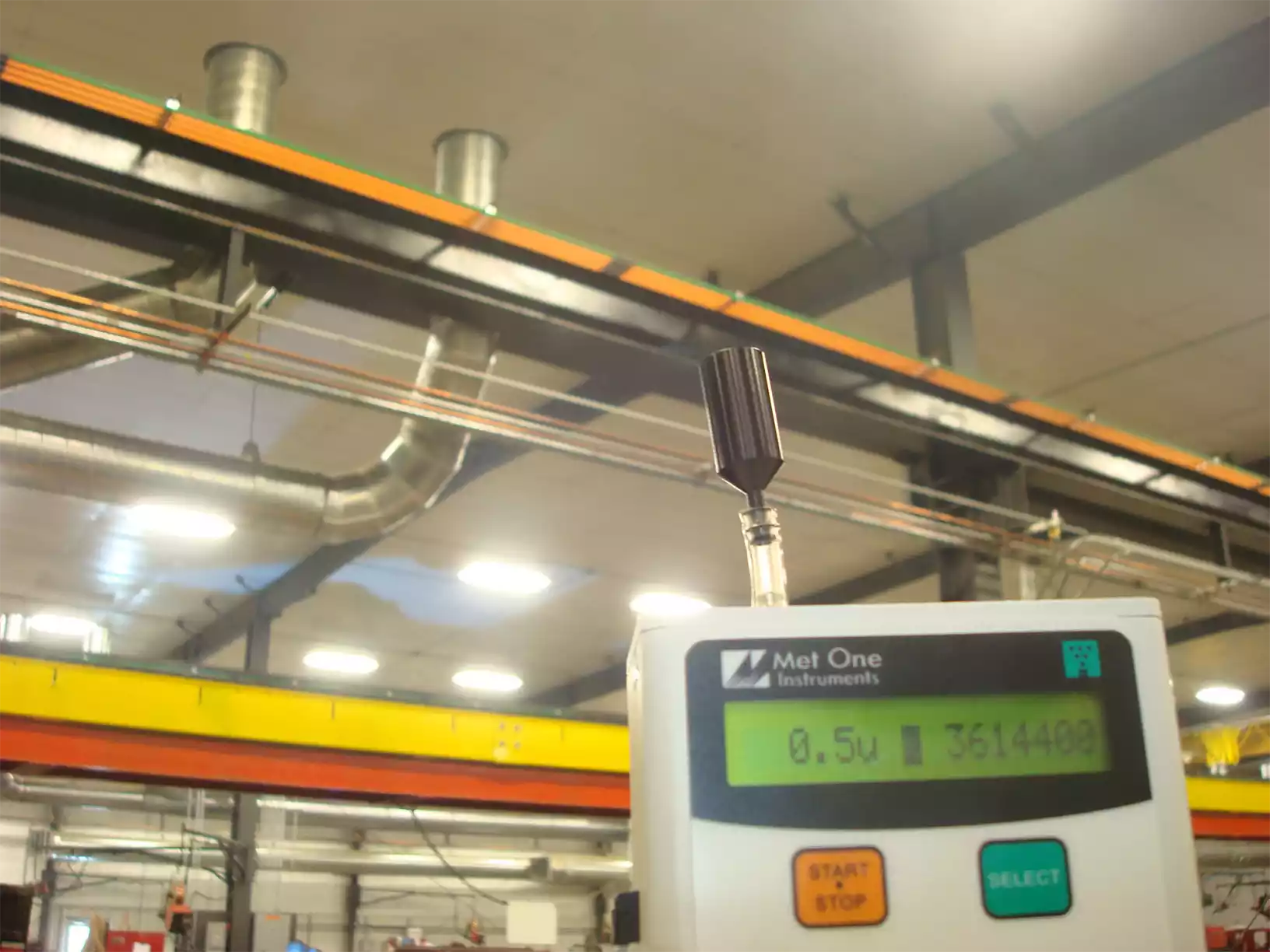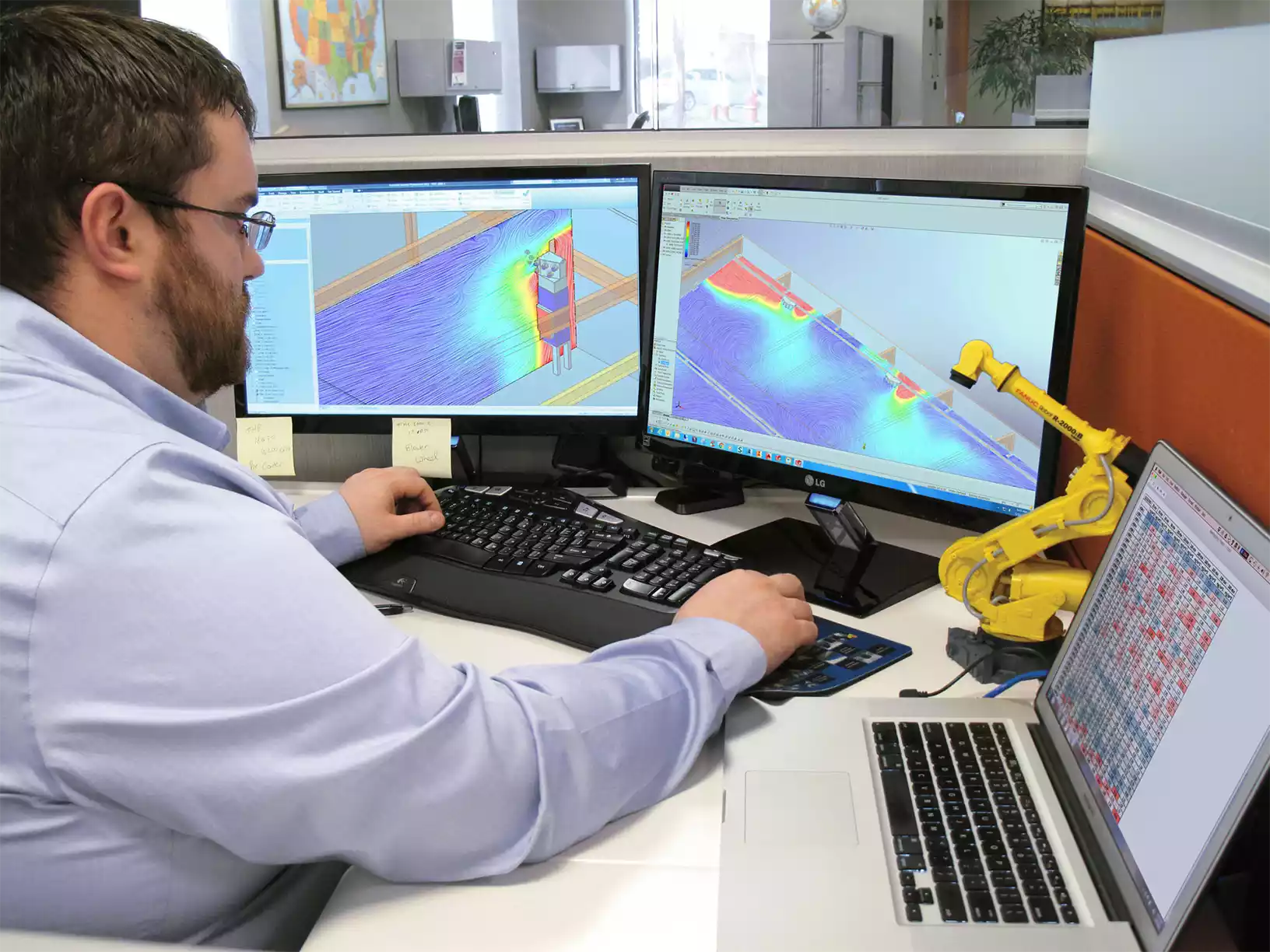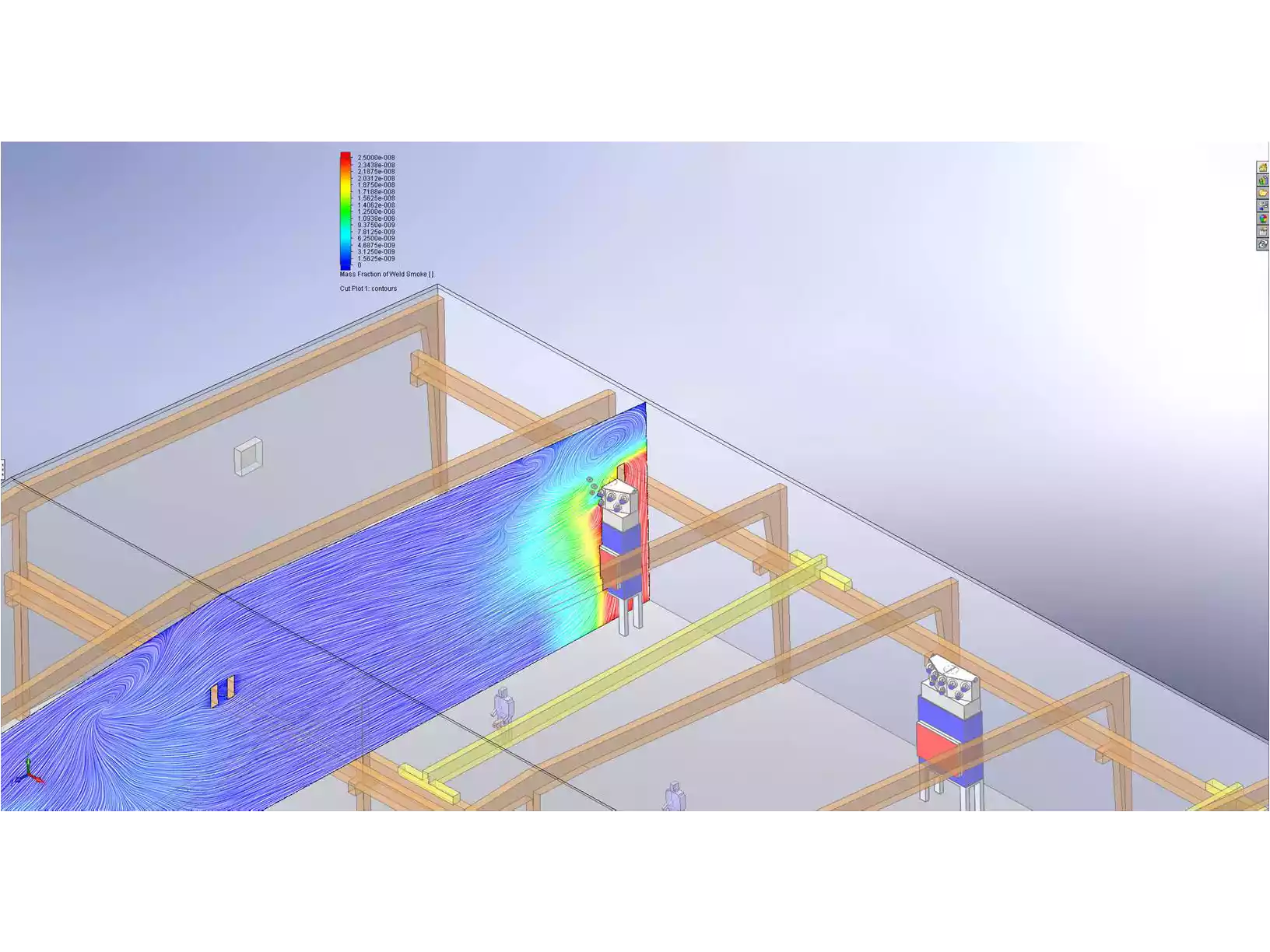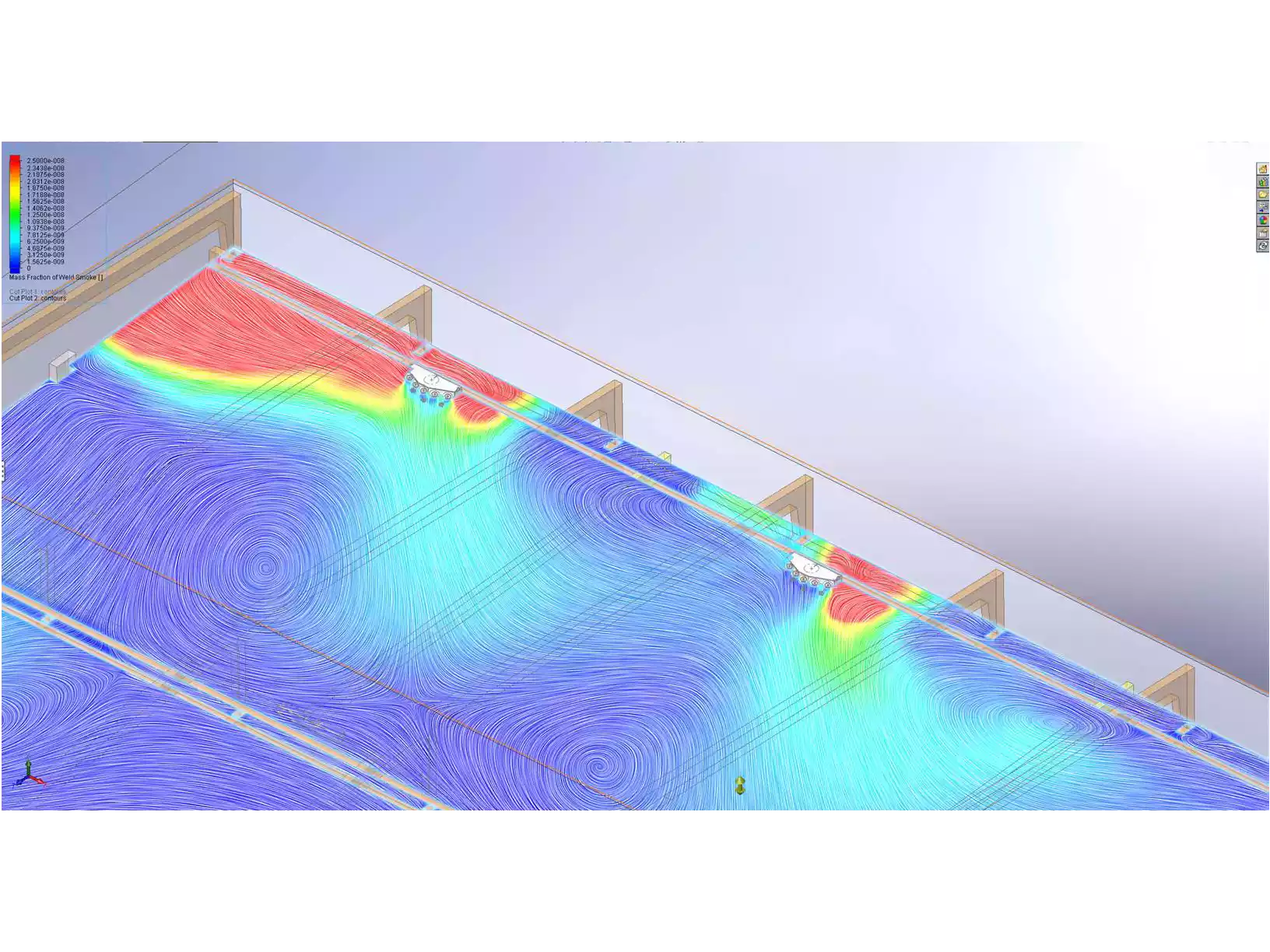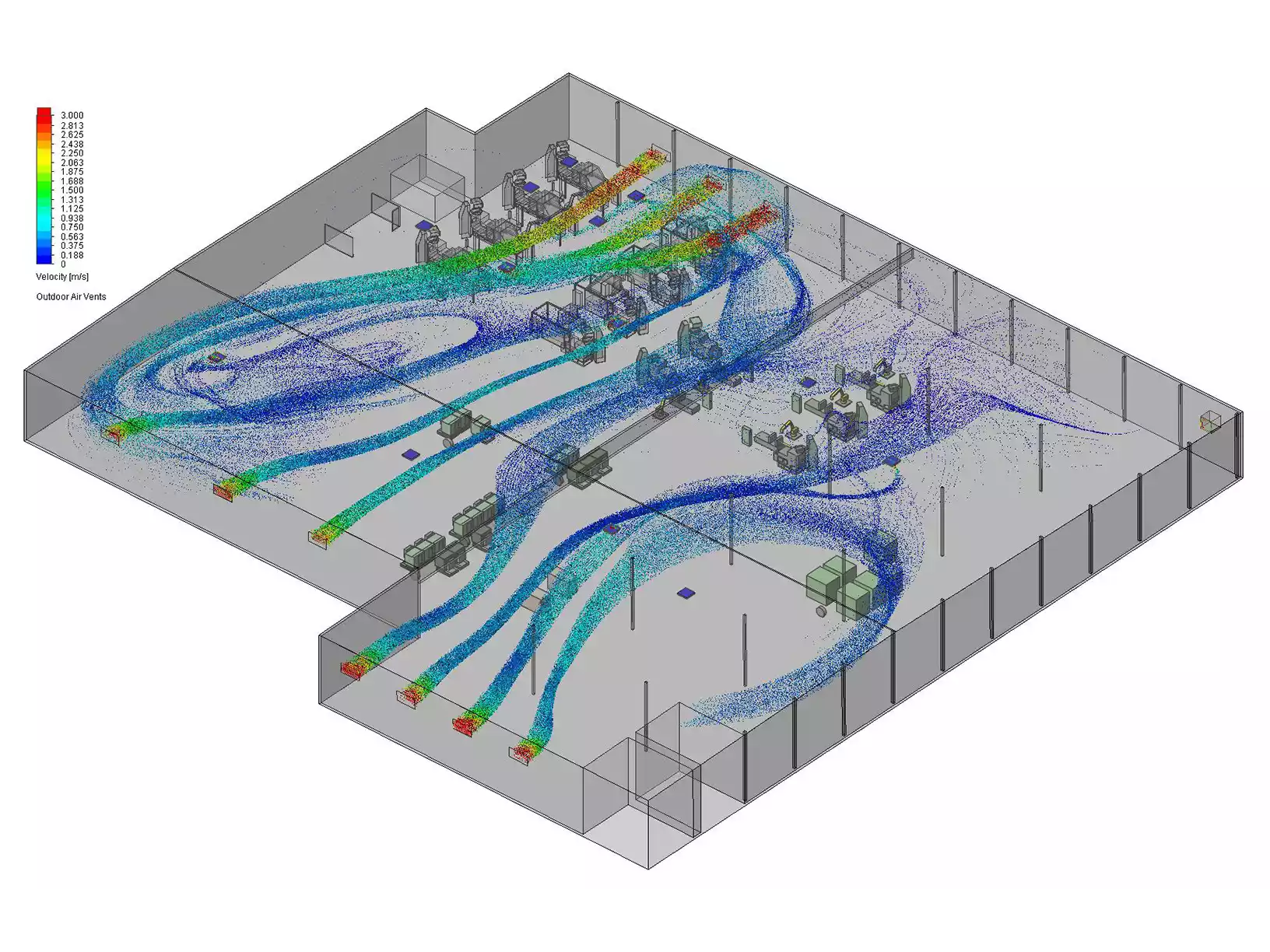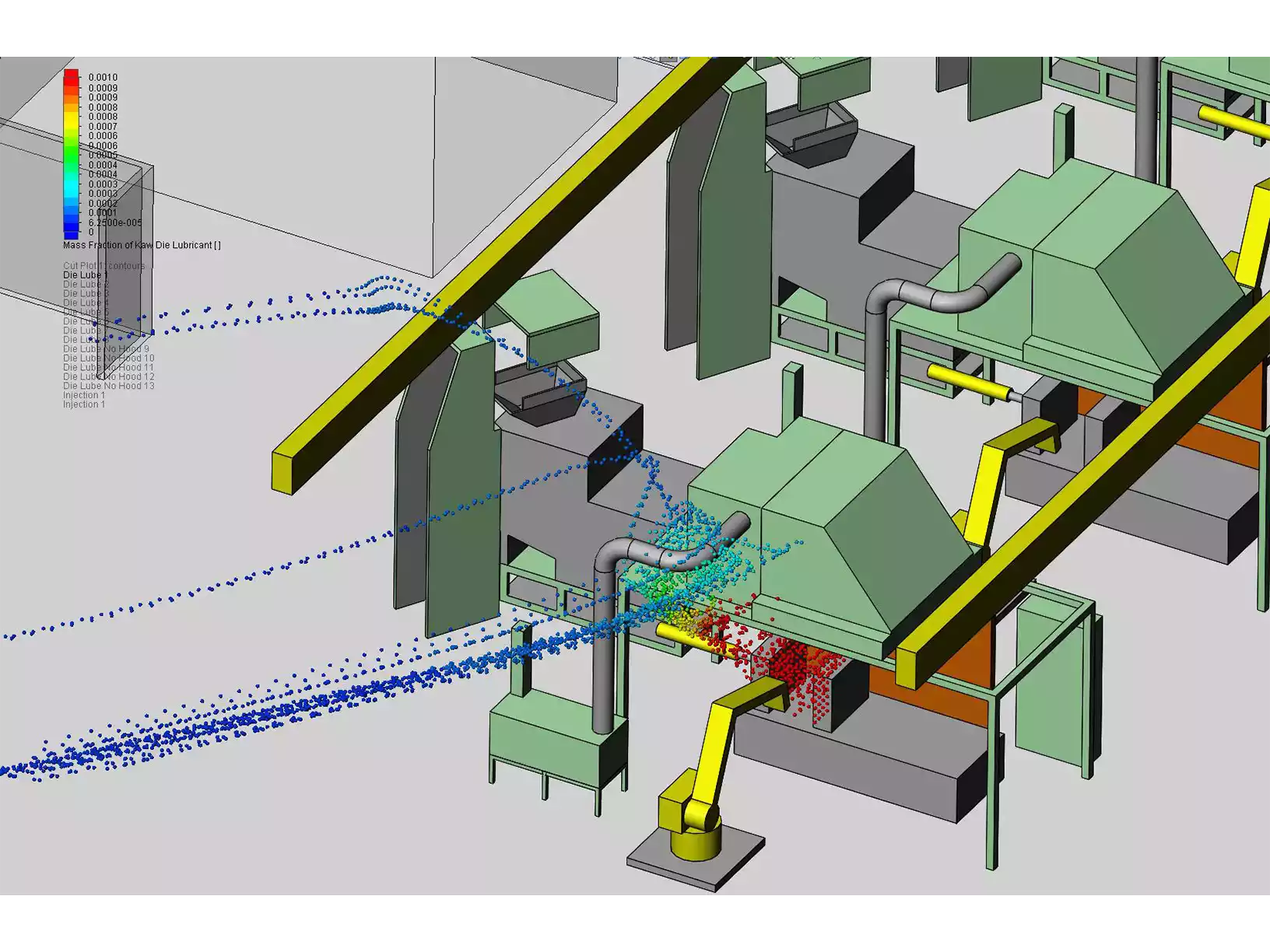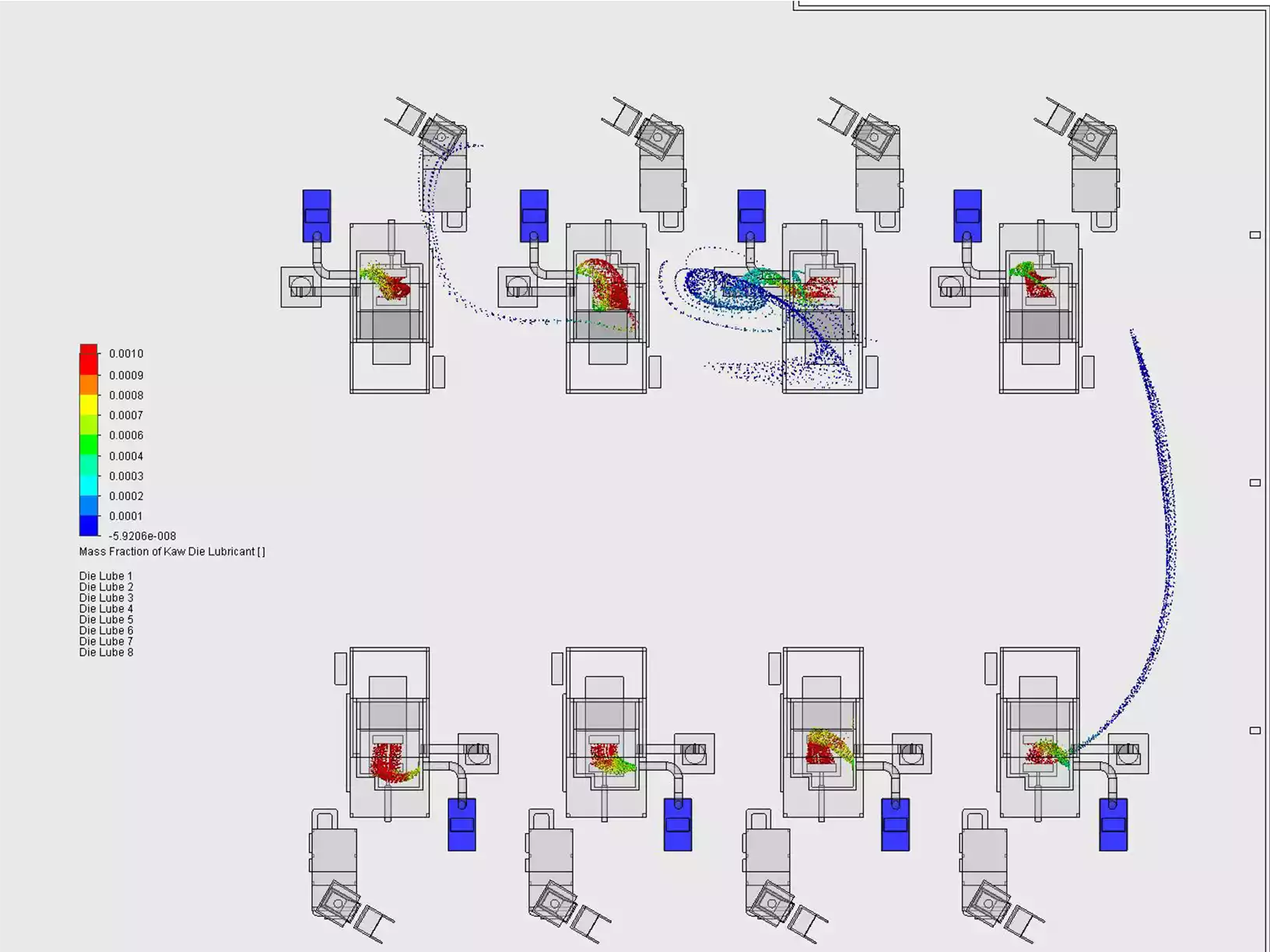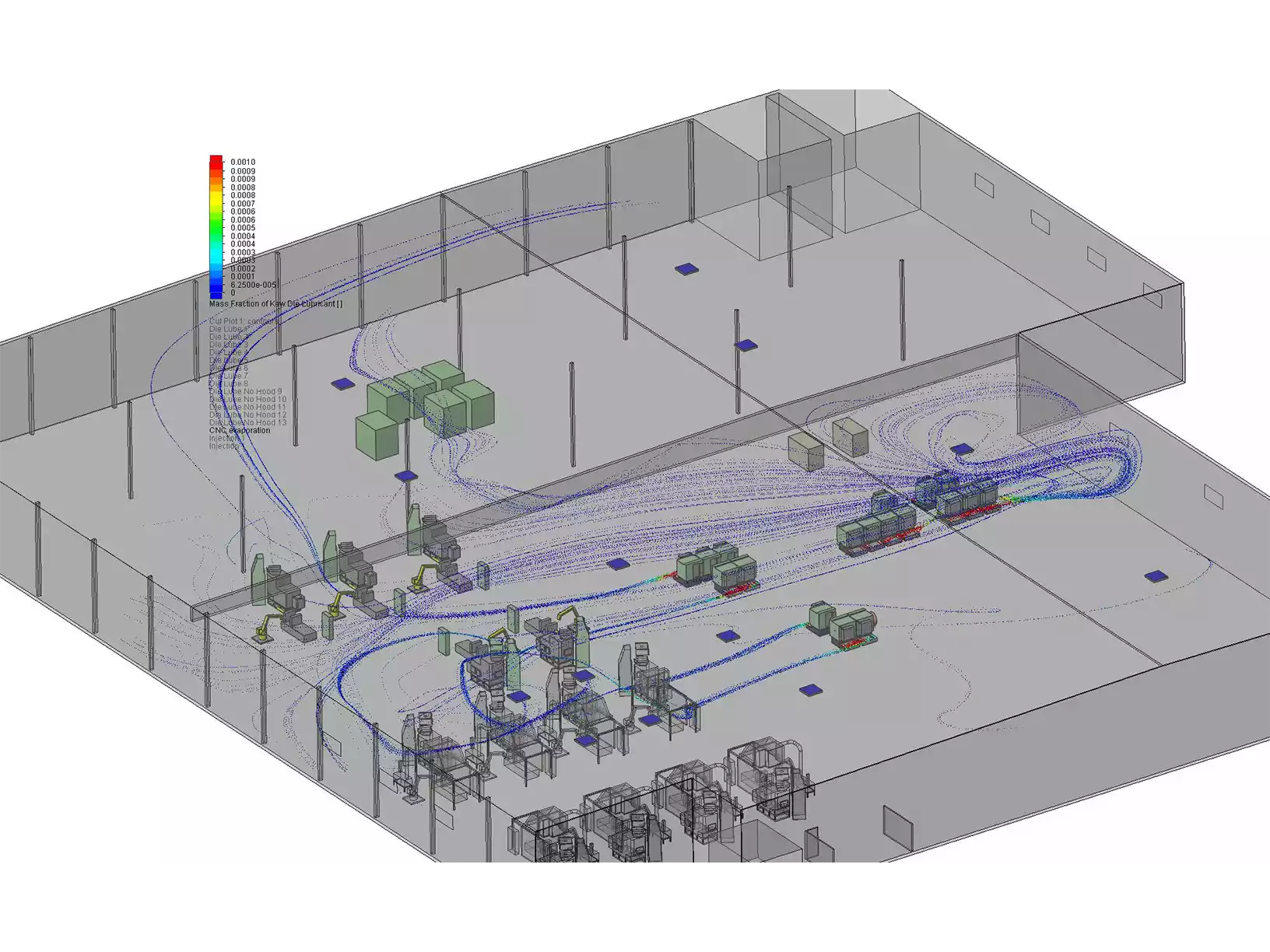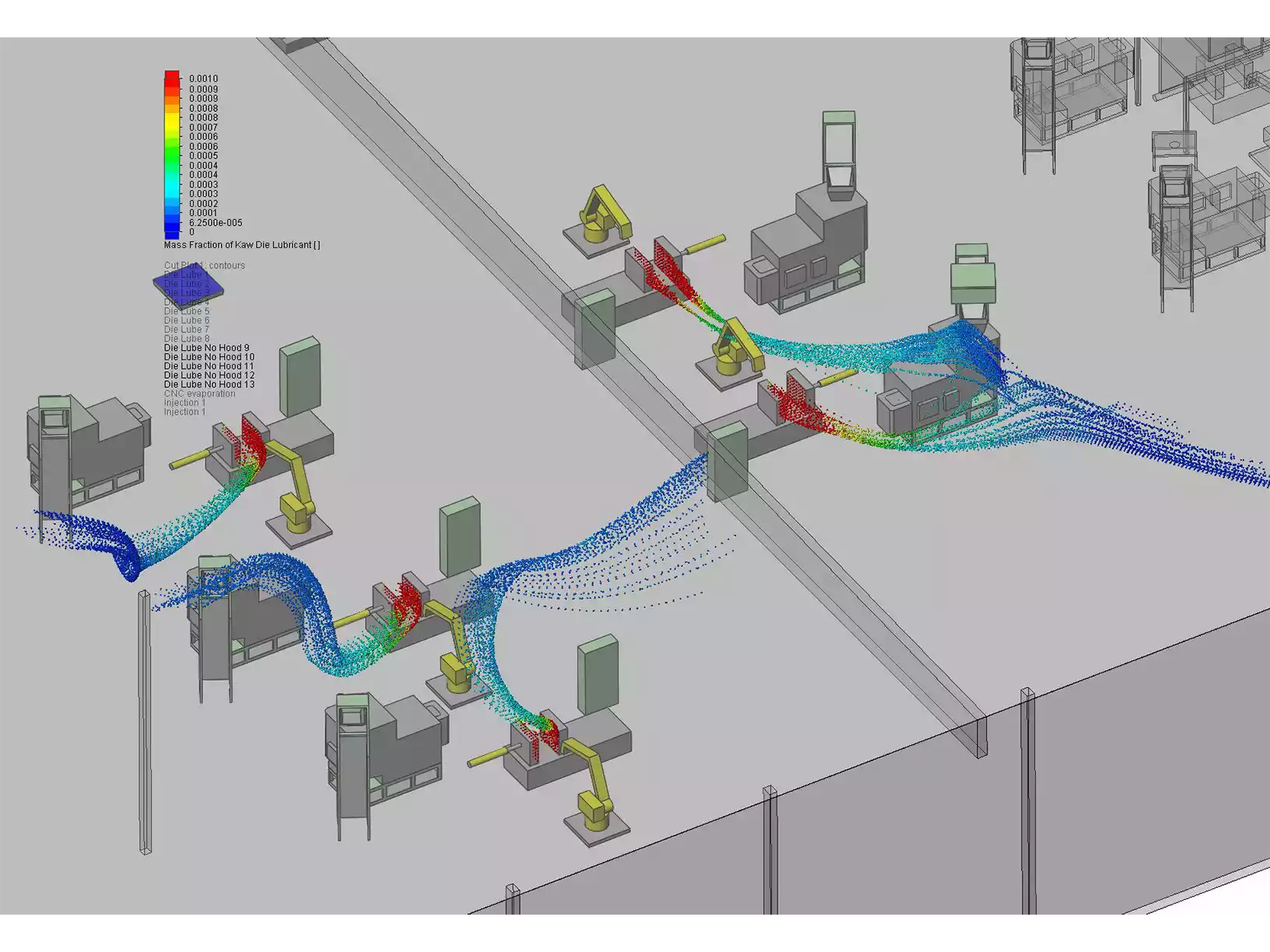VENTMAPPING® ENGINEERING
A SOLUTION FOR EVERY APPLICATION
In designing ventilation systems, a key challenge is customizing each system to its unique application and environment. Many factors must be taken into consideration: dust and fume sources, plant layout, existing airflow patterns, future process changes and more. Your motivation and goals matter greatly, as well—these might include any combination of health concerns, plant safety, regulatory compliance and more.
VENTMAPPING IS A PROCESS TAILORED TO THE CLIENT
It begins with a conversation. Our engineers have decades of experience and schools' worth of information to share, but more than that, we're great listeners. Every manufacturing facility is unique, and we start by listening closely to your needs, your budget concerns, your deadlines and your future plans. From there we delve into your processes and consider further steps. VentMapping includes some of the most advanced analytical methods available, including cutting-edge CFD modeling, 3D scanning and more.
VentMapping follows five steps:
- Onsite Consultation
- Data Collection
- Modeling
- System Design
- Final Review and Analysis

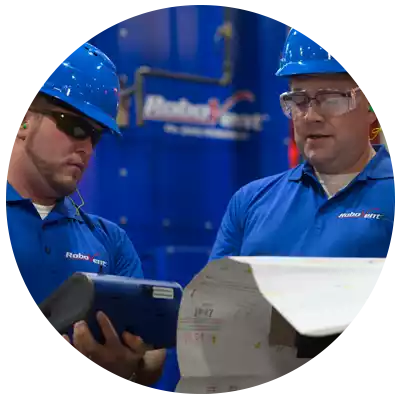
STEP 1: ONSITE CONSULTATION
Each engagement begins with an onsite meeting. A conversation helps us understand your challenges and goals. A primary objective is to clearly identify and articulate your objectives. Our engineers have extensive knowledge of air quality regulations and exposure limits and understand how to meet any air quality goal you have.
A review of your facility layout and of your dust-generating processes helps our engineers form a preliminary assessment of the situation. For example, knowing the amount of fume or dust created during a shift and how that dust propagates throughout a facility is important. At first this is a qualitative analysis—the measuring and hard data will come later—but it is a good place to start and a way to discuss goals and options.
STEP 2: DATA COLLECTION
Next, we focus on your current state. For example, we will measure your current air quality and review current exposure levels. If it is source capture process, we will analyze the dust escaping from existing processes and understand your existing dust collection systems. If you already have data of your own, we can insert that into the model. If you don't have your own data, we will gather it with our own team. In the case of ambient systems, we use scientific-based methods to measure particulate levels throughout the facility so we can map how they are generated, how they spread and where they end up. Depending on the data you already have available, our data collection may include:
- Onsite Process analysis
- Onsite Dust and Fume measuring
- Process production levels (for example, if welding, we would gather weld wire data vs. number of units produced, etc.)
- Onsite Existing Building Ventilation Analysis
- Onsite Air Quality Study
- 3D Laser Scanning (to measure and build a virtual model of your facility)
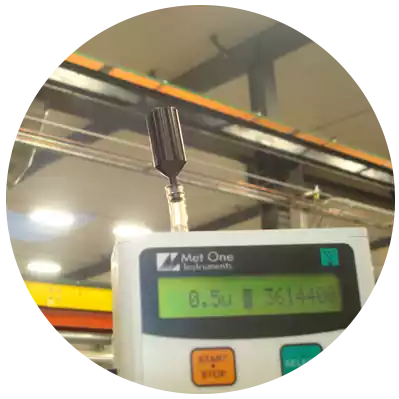
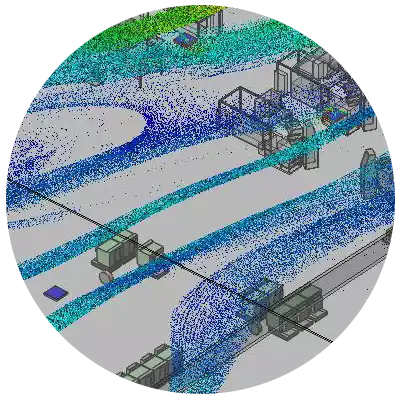
STEP 3: MODELING
Next, our engineers build a 3-D CAD model of your facility, including interior walls, windows and doorways, dividing curtains, production line layout, locations of dust and fume-producing processes, existing HVAC and ventilation systems, ductwork and other physical features. Your air quality data are then loaded into this model.
In the case of an ambient solution, we will use Computational Fluid Dynamics, or CFD, to animate this model. Your model is an accurate simulation of the airflow patterns throughout your facility, and you can see when and where contaminants are moving through your plant. This model allows us to predict the impact of different equipment configurations.
In the case of source capture, for difficult hoods, we can simulate the hood capture using CFD and predict what impact cross-drafts may have on the process.
STEP 4: SYSTEM DESIGN
Next, using the simulation software, our engineers can design your optimal solution.
Their many years of experience combine with the results from the model to produce a design that has the best product recommendations and the most effective implementation. The design will include the ideal placement and configuration for ductwork and equipment so that it works with, not against, your existing airflow and facility layout.
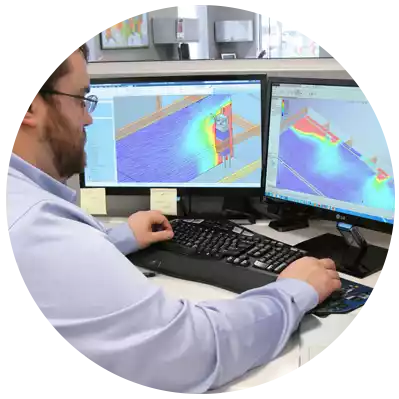
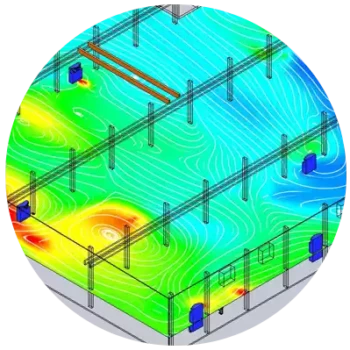
STEP 5: FINAL REVIEW AND ANALYSIS
Once your system is installed and implemented, we make sure that the actual results match the predictions of the VentMapping software. Our engineers make any necessary final adjustments. The RoboVent Performance Guarantee promises that the final solution will meet your expectations.
BEFORE AND AFTER
While your initial dust and fume problems within a facility might be obvious, due to noticeable haze, how to address these problems is not often obvious. VentMapping is a comprehensive process that answers any air quality challenge. VentMapping's cutting-edge computer modeling lets you see the invisible—mapping out your airflow patterns and pathways for dust and fumes.
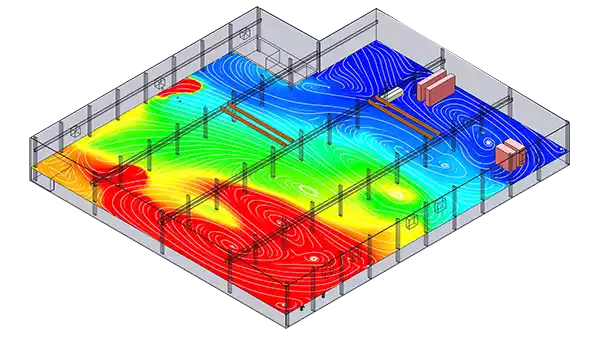
Before: The airflow simulation shows the dirty air concentrating around equipment and manufacturing processes.
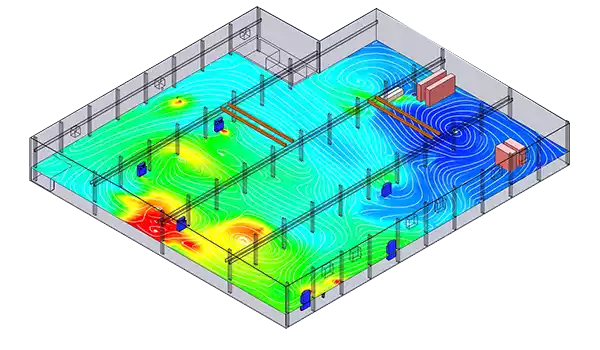
After: A second simulation shows how optimal placement of dust collectors has effectively circulated and cleaned the air.
SEE WHAT'S POSSIBLE
Unlock the all possibilities through engineering and design with RoboVent experts.


